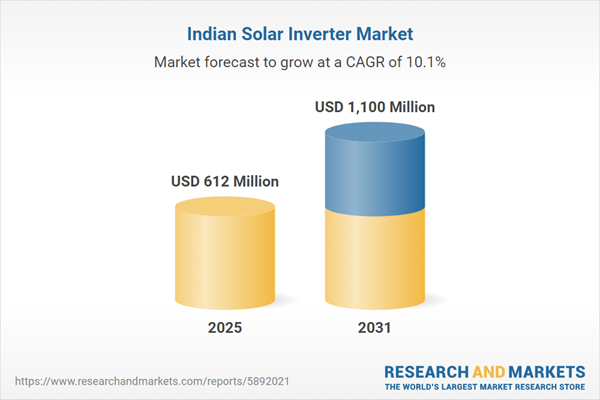Speak directly to the analyst to clarify any post sales queries you may have.
10% Free customizationThis report comes with 10% free customization, enabling you to add data that meets your specific business needs.
The market comprises various inverter types, including string inverters, microinverters, and hybrid inverters, each suited to specific system configurations and performance requirements. Modern inverters often come with advanced features such as real-time monitoring, grid synchronization, and energy optimization capabilities.
With solar adoption expanding nationwide, solar inverters play a pivotal role in ensuring reliable energy conversion, grid integration, and system protection. In grid-tied setups, inverters also support net metering by channeling surplus energy back to the grid. India's drive toward renewable energy, paired with expanding solar infrastructure, continues to push the demand for efficient and technologically advanced solar inverters.
Key Market Drivers
Government Policies and Incentives
Robust government support remains a key driver of India's solar inverter market. Policies under the National Solar Mission aim to install 280 GW of solar capacity by 2030. Initiatives like the Production Linked Incentive (PLI) scheme, Rooftop Solar Programme Phase II, and PM-KUSUM have incentivized both urban and rural solar installations.These programs provide subsidies, tax benefits, low-interest loans, and net metering support, directly reducing the cost of installing solar energy systems and thereby fueling inverter demand. State-specific policies in solar-active regions such as Gujarat, Rajasthan, and Tamil Nadu further augment demand.
Large-scale solar tenders and utility-scale solar park development also drive inverter demand in commercial and industrial segments. Decentralized energy solutions and solar mini-grids in rural areas, backed by schemes like PM-KUSUM (which received an allocation of INR 45,000 crore or approx. USD 6 billion), are expanding inverter applications across the country.
Key Market Challenges
Price Sensitivity and Cost Pressures
High price sensitivity, particularly in the residential and small commercial segments, poses a major challenge. Despite the growing affordability of solar systems, consumers often choose inverters based on price rather than performance, sidelining technologically advanced options like hybrid or microinverters.This tendency places pressure on manufacturers to deliver low-cost products, often compromising features, efficiency, or after-sales support. Aggressive pricing competition has led to eroded profit margins, making it harder for manufacturers to invest in innovation or maintain quality.
Furthermore, India's dependence on imported components, especially from China, exposes the sector to supply chain disruptions, price fluctuations, and import duties. Smaller installers may lack technical expertise, leading to suboptimal inverter selection and increased system failures, affecting consumer trust and hindering market maturity.
Key Market Trends
Shift Toward Hybrid and Energy Storage-Integrated Inverters
A major trend in the Indian market is the growing shift toward hybrid inverters, which integrate solar energy systems with battery storage. These inverters allow consumers to store excess energy and utilize it during power outages or at night, making them ideal for areas with grid instability or frequent blackouts.This trend is being driven by falling battery costs, the need for energy self-sufficiency, and increased demand for uninterrupted power supply. Hybrid systems are especially gaining popularity in rural and semi-urban regions, as well as among urban consumers seeking alternatives to diesel backup.
Manufacturers are introducing inverters with in-built battery management and remote monitoring capabilities, along with scalable and retrofit-friendly designs. As energy storage becomes more mainstream and affordable, hybrid inverters are expected to see significant growth in both new installations and system upgrades.
Key Players Profiled in this India Solar Inverter Market Report
- Sungrow Power Supply Co., Ltd.
- ABB Ltd.
- Siemens AG
- Fimer S.p.A.
- Huawei Technologies Co., Ltd.
- Schneider Electric SE
- Enphase Energy, Inc.
- SMA Solar Technology AG
Report Scope:
In this report, the India Solar Inverter Market has been segmented into the following categories, in addition to the industry trends which have also been detailed below:India Solar Inverter Market, by Type:
- Central Inverter
- String Inverter
- Micro Inverter
India Solar Inverter Market, by Connection Type:
- On-Grid
- Off-Grid
India Solar Inverter Market, by Phase:
- Single Phase
- Three Phase
India Solar Inverter Market, by End User:
- Residential
- Commercial
- Industrial
- Utilities
India Solar Inverter Market, by Region:
- South India
- North India
- West India
- East India
Competitive Landscape
Company Profiles: Detailed analysis of the major companies present in the India Solar Inverter Market.Available Customizations:
With the given market data, the publisher offers customizations according to a company's specific needs. The following customization options are available for the report.Company Information
- Detailed analysis and profiling of additional market players (up to five).
This product will be delivered within 1-3 business days.
Table of Contents
Companies Mentioned
The leading companies profiled in this India Solar Inverter market report include:- 1. Sungrow Power Supply Co., Ltd.
- 2. ABB Ltd.
- 3. Siemens AG
- 4. Fimer S.p.A.
- 5. Huawei Technologies Co., Ltd.
- 6. Schneider Electric SE
- 7. Enphase Energy, Inc.
- 8. SMA Solar Technology AG
Table Information
| Report Attribute | Details |
|---|---|
| No. of Pages | 70 |
| Published | May 2025 |
| Forecast Period | 2025 - 2031 |
| Estimated Market Value ( USD | $ 612 Million |
| Forecasted Market Value ( USD | $ 1100 Million |
| Compound Annual Growth Rate | 10.1% |
| Regions Covered | India |
| No. of Companies Mentioned | 9 |









